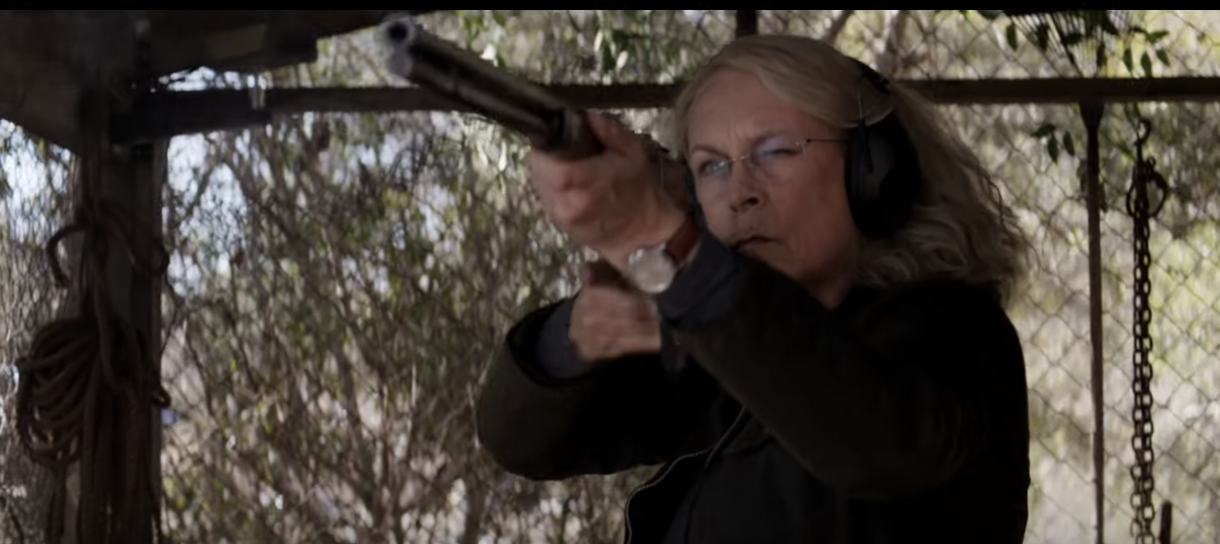Reclaiming the ‘final girl’ horror film archetype

Forty years ago, on Halloween night, a mute and masked behemoth in a navy jumpsuit silently embarked on a killing spree in the fictional Illinois suburb of Haddonfield. The silent shape who brought a wave of terror and bloodshed, apparently absent of motive, to his hometown was fellow Haddonfield native Michael Myers. This is the premise of the 1978 movie Halloween, which is widely regarded as one of the best, if not the best, horror film of all time. Halloween grossed $47 million upon its initial release in 1978, which, at the time, was the most lucrative opening for an indie film ever.
Studios and producers began to bank on horror movies as money makers, and began to produce now-classic franchises — like A Nightmare on Elm Street, Friday the 13th, Hellraiser, Child’s Play, and Candyman — and era-defining horror icons like Jason Vorhees, Freddy Krueger, and, of course, Michael Myers. Most slasher movies made since Halloween, like the aforementioned titles, have had simple, similar premises: Deranged killers, wielding a trademark instrument of death, stalk innocent teenagers, brutally murdering them one by one.
But perhaps the most important, and often overlooked, similarity among these films is their invention of a new type of archetypal horror hero. Bucking the trend of male heroism, these films introduced audiences to what would become known as “the Final Girl”: protagonists who are victims of murderous circumstances — who weren’t looking to fight for their lives but rather had the fight thrust upon them — but who survive nonetheless.
Let’s go back to Haddonfield. It’s the night of October 31, and a 17-year-old babysitter named Laurie Strode (played by Jamie Lee Curtis in her first-ever role) lounges on a couch with two young children watching The Thing From Outer Space. Unbeknownst to Laurie, three of the friends she had planned to meet up with later that night are all already dead thanks to Michael Myers’ tireless kitchen knife, and he has now set his eyes on her. Throughout the rest of the film, Myers stalks Laurie through the neighborhood in which she is babysitting. Laurie laboriously sprints from house to house, eventually emerging from the ordeal teary-eyed, bewildered, bleeding, and terrified — but a survivor.
Laurie Strode is the first “Final Girl” in a long line of iconic heroines who went on to avoid becoming murder statistics in their own movies. A Nightmare on Elm Street introduced us in 1984 to Nancy Thompson, who survived a dream-stalking psychopath. In 1979, Alien gave us Ellen Ripley, who outwitted a ferocious alien on a barren space station in a twisted game of cat and mouse. In 1987, the Hellraiser franchise gave us Kristy Cotton, who bested a quartet of interdimensional demons hellbent on torture and soul collection, as well as the Friday the 13th series, which gave us a veritable cavalcade of different female protagonists surviving the brutality at Camp Crystal Lake.
None of these Final Girls survive out of coincidence; their survival is always a product of their will and determination. They’re never simply “allowed” to live by their predators, but instead exhibit their determination and cleverness to defeat them. The victims of Crystal Lake fought back using whatever household items they could get their hands on, including kitchen knives and bookcases — kind of like a morbid Home Alone sequence. When A Nightmare on Elm Street’s victims realize their dreams are being terrorized by Freddy Kruger, they resort to coffee, Adderall, and lucid dreaming to face their attacker head on. Over the course of the four films in the Scream franchise, Sidney Prescott resorts to brutal combat with knife-wielding murderers to save her own life.
Yet, the Final Girl’s success always comes with an asterisk. Films in horror franchises rarely come to a definitive end, so as strong as these heroines may be, their efforts to defeat their respective villains are insinuated to be only temporary. Even after being burned, drowned, strangled, dismembered, shot, and even melted, these villains always return via some convoluted means, undercutting the Final Girl’s past bravery, just in time for a sequel. These monsters never face consequence for their actions, and so now, in 2018, audiences across the country will watch Laurie Strode face Michael Myers 40 years after his original rampage in the newest Halloween movie.
It seems this film will finally buck the trend of the Final Girl’s asterisk. In this new film, it’s clear that Laurie was molded and motivated by her trauma; she’s both ready and willing to make her assailant pay for what he’s done. Trailers for the movie depict a heroine prepped, and even praying, for her assailant’s return: She is depicted unloading ammunition on mannequins, wielding knives, and raiding a weapons closet, actions that insinuate she has been preparing for a future encounter for decades. Laurie seems to be reclaiming her agency over Michael; she is no longer a would-be victim that got away, not just someone who survived him, but someone who is actively preparing to go to head-to-head with her attacker.
This timely film reflects the #MeToo era in which it is being released well. Halloween is not just a slasher flick in time for the holiday, but also a story about a woman forcing a monster, embodied by a blank-faced male shape, to account for the trauma he has caused her. The 2018 incarnation of Laurie Strode looks like she’ll be the next evolution of the Final Girl, one who doesn’t become a fighter once they’re attacked by a monster, but instead one who’s developed into a warrior because she’s acutely aware of the dangers that lurk around corners and alleys — one who’s not hobbled by that awareness but stronger because of it.
More articles by Category: Arts and culture, Media
More articles by Tag: Film


























